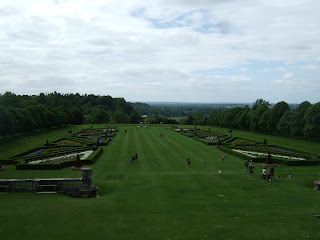 I would like to thank Mr. Rowley Leigh for his 'Apricot and almond tarte
fine': a simple preparation for a tasty summer cake,
glossy golden and elegant.
I would like to thank Mr. Rowley Leigh for his 'Apricot and almond tarte
fine': a simple preparation for a tasty summer cake,
glossy golden and elegant.
But, the combination of apricots and almonds doesn't work well just in the
kitchen. 'Rare grafts', including 'almond on apricot', are reported in ancient Egypt. They certainly added something special to the incredible
variety of fruit already available in Islamic gardens in Medieval times, such as apples,
quinces, pears, figs, peaches and grapes. Agricultural treaties, written in Sanskrit, translated into Arabic, copied into Persian and read in India, gave all the necessary information to
cultivate, harvest and store them. In these ancient books, brave gardeners could find sophisticated techniques to
experiment multi-coloured fruits on
the same plant, to obtain redder apples and peaches by adding rose thorns to the plant roots or to have sweeter grapes by irrigating the plants with extract of dates. They decorated citrons and pears with inscribed letters and almond seeds with calligraphy. Gardens were special places.
Fruit trees travelled as fast as words. Under the Mughal Emperor Akbar, apricots were introduced in Kashmir from Kabul, and then imported in India. Things have not changed much.
Mr. Leigh suggests to visit the
Hunza Valley in Pakistan, or the Loire Valley in France, to taste velvety apricots at their best.
P.S.:
The 'Apricot and almond tarte fine' concluded a relaxed summer Sunday lunch with home-made vitello tonnato [sliced veal with tuna sauce] and tomato salad.
TravelinaGarden, 2015.

Further reading:
Scent in the Islamic Garden. A Study of Deccani Urdu Literary Sources, Ali Akbar Husain, Oxford, Oxford University Press, 2000.
The Anatomy of Dessert: with a few Notes on Wine, Edward Bunyard, New York, Modern Library, 2006. Originally published: London, Dulau, 1929.
Links:
Ripe for the picking, Rowley Leigh, FT Magazine June 20/21 2015
http://www.ft.com/intl/cms/s/0/fc12fb14-146d-11e5-ad6e-00144feabdc0.html











